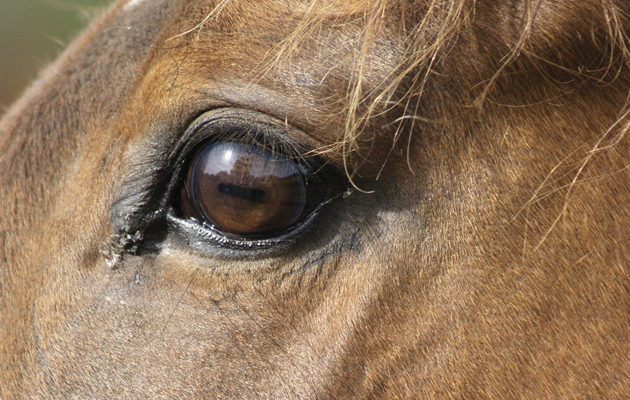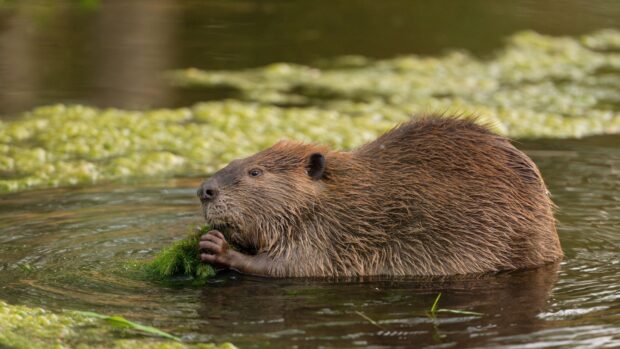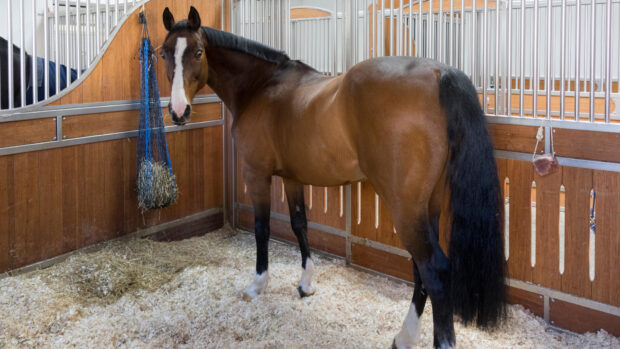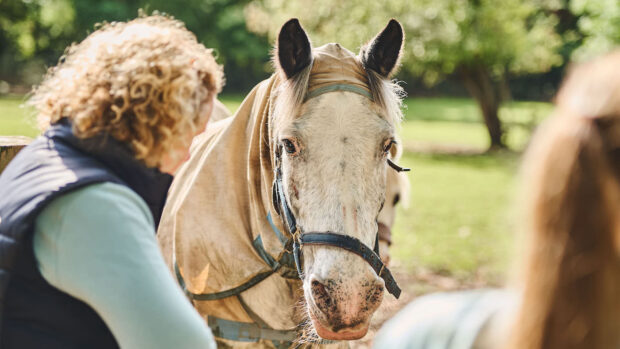The more a horse snorts, the happier it is, according to a new study by French researchers.
The team, led by Mathilde Stomp of the Université de Rennes, hope that measurable positive emotional responses in horses could lead to improved welfare practices.
The research aimed to look at “low intenstity” positive responses, whereas previous animal studies have focussed on “high intensity” reactions, such as those induced by “social play”.
Writing in the open-access journal PLoS ONE, Mathilde and her colleagues said they were focusing on horses’ “snorts” — which have often been thought of as a means of clearing the nose of debris but have anecdotally been associated with “positive situational changes or, like in rhinos, [used] while foraging”.
“In the present study, we hypothesised that snorts may, as a result of a mild positive excitation, be a behavioural reflection of a transient positive physiological change,” they said.
The researchers drew an important distinction between a “snort” and other nostril sounds horses make when alarmed or curious.
“The ‘snort’ is a very short raspy inhalation sound produced in a low alert context, such investigating a novel object or obstacle. It could also be produced prior to emitting a ‘blow’; the ‘blow’ corresponds to a short very intense non-pulsed exhalation through the nostrils and is generally associated with vigilance/alarm postures,” the report’s authors said.
“The ‘snort’ corresponds to a more or less pulsed sound produced by nostril vibrations while expulsing the air, with a slightly longer duration in comparison to the ‘blow’. “
The study, conducted in Brittany, involved 48 horses in four groups — two from riding schools and two from private owners.
The study described both riding schools as “characterised by restrictive housing conditions”, with horses being kept in stabling with limited turnout and being worked 4-12 hrs a week.
The other group came from two private homes and involved horses living in naturalistic conditions in established groups, occasionally being used for leisure riding.
One single experimenter recorded the snorts, and at the same time data was collected on behavioural and postural signals such as the position of the horses’ ears.
A “chronic stress score” [TCSS] was also noted which took into account four factors: the number of aggressive responses towards the researcher; the number of stereotypic behaviours displayed; the percentage of time spent with ears backwards while feeding, and the percentage of time spent facing the wall.
In the two riding school populations, horses produced in average 5.66±3.32 snorts per hour. Snort rates clearly differed according to the context, with more recorded when horses were turned out in the field than when stabled.
The horses kept in naturalistic conditions mostly snorted while eating grass (68.9%), or when in a slow exploratory walk (20.1%). In some cases, snorts were also produced just after rolling (5.4%).
The riding school horses also showed the most snorts while eating : 67.3% were recorded when eating hay in their stables and 69.6% when grazing.
A correlation was also found between snort production and welfare scores, with stress signs decreasing at pasture while snort responses increased. The riding school population, which demonstrated the highest stress scores overall, also increased their snort rate when stress signs were low.
“This study, which aimed at testing the potential interest of snorts as indicators of positive emotions, has revealed that snort production is associated with more positive contexts (in pasture, while feeding) and states (with ears in forward position) and is less frequent in horses showing an altered welfare,” the study stated.
“It is clear that snorts cannot be merely considered as having a simple hygienic function of clearing the nostrils, expressed during no particular context nor in a specific arousal state.
“To conclude, this study calls snort function into question. We propose that it would be indicating of a relaxation phase associated with positive emotions of low intensity and thus expressed even more by horses in a chronic good welfare state,” it added.
Continues below…

Horses can read and remember human emotions, scientists find
The horses changed behaviour according to the humans’ expressions

Are you angry or happy? Horses can tell by your facial expressions
Horse can tell a human’s emotions by our facial expressions, according to new research

Horses can tell when human voices and facial expressions don’t match
Research found the horses reacted differently when pictures of human emotions did not match those in recorded voices
“However, our study does not totally allow to rule out the sanitary function of snort, since dust differences present in stall and pasture contexts have not been examined in details, but the results show that this is unlikely to explain differences between individual horses.”
For all the latest news analysis, competition reports, interviews, features and much more, don’t miss Horse & Hound magazine, on sale every Thursday.




